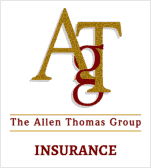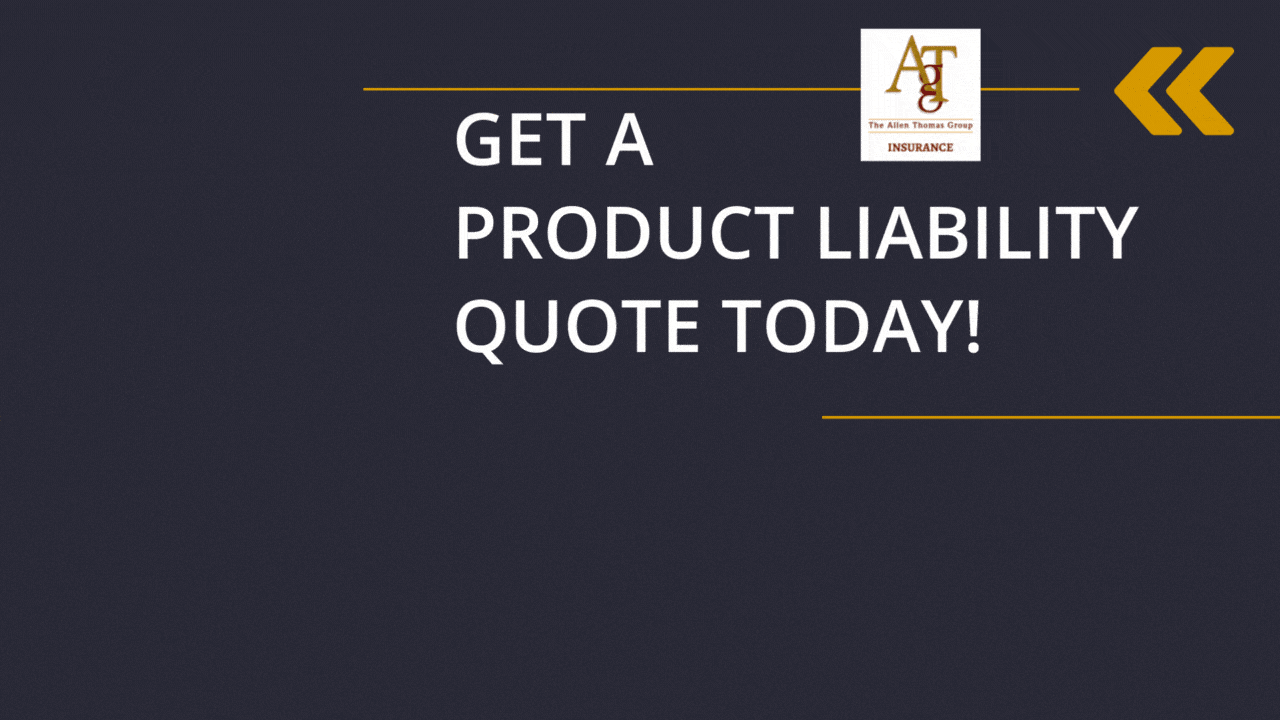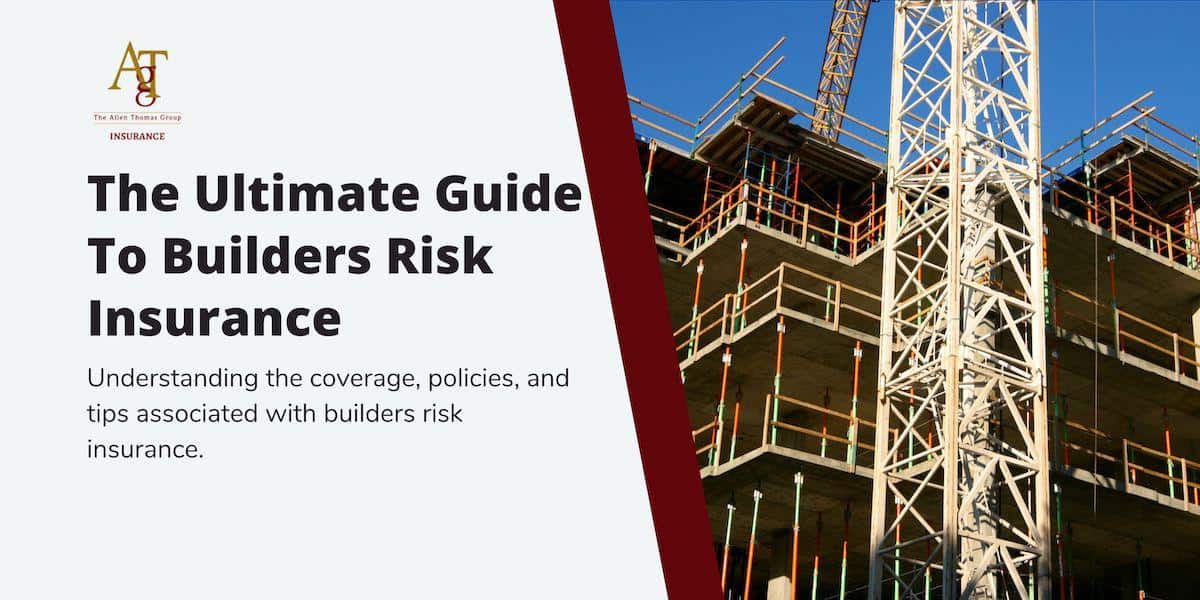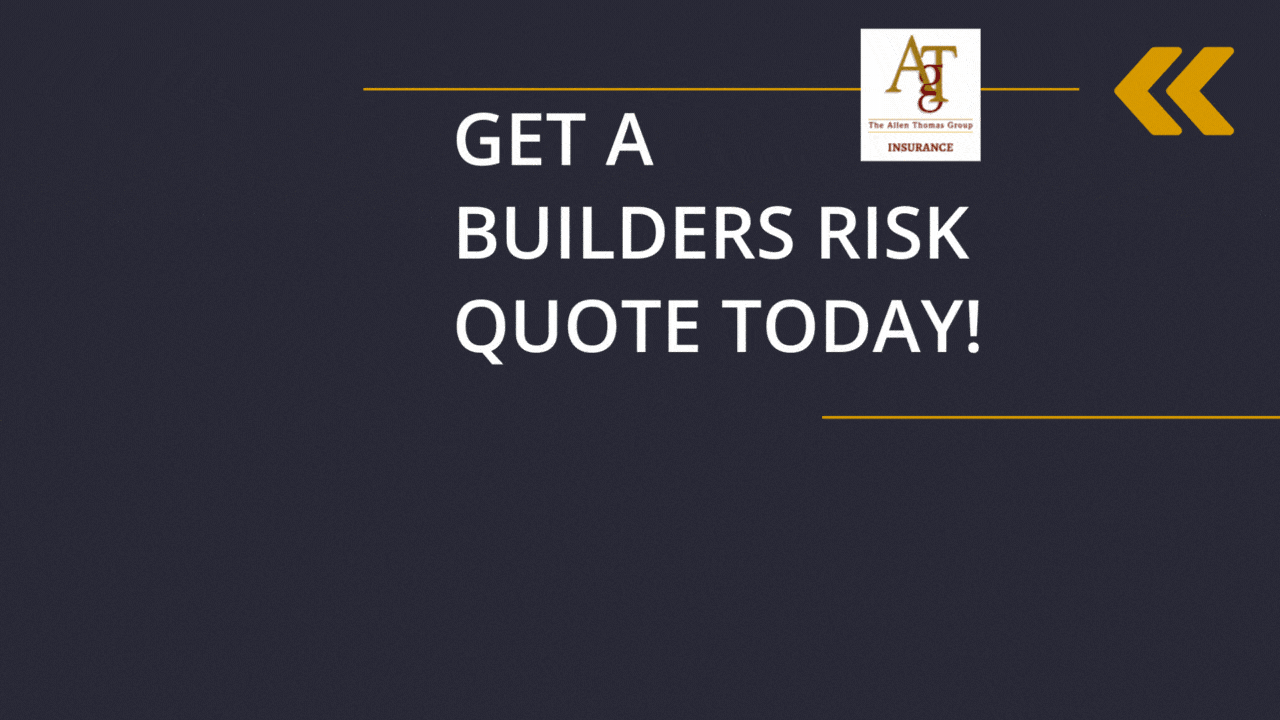Ever purchased a product that did not perform as promised or, even worse, caused harm unexpectedly? While consumers bear the brunt of such instances, businesses can find themselves on risky ground that could potentially lead to significant financial loss.
In such situations, one often wonders – who serves justice in the world of products and goods? Enter: Product Liability Insurance.
Product Liability Insurance is an essential insurance coverage that acts as your business’ knight in shining armor, shielding you from expensive litigation costs related to product defects.
This guide will equip you with a robust understanding of what Product Liability Insurance is all about – its importance, benefits, and why it’s every business owner’s must-have risk management strategy. Trust us; you don’t want to be caught unprepared in an unforgiving marketplace.
What is Product Liability Insurance?
Product liability insurance is a form of coverage that helps protect businesses from potential claims that arise when their products cause bodily injury or property damage to someone else’s belongings.
It safeguards against the financial risks associated with product defects and accidents. This type of insurance is typically included as part of a general liability insurance policy, which provides broader coverage for other liability-related risks that businesses may face. It is particularly important for small businesses involved in manufacturing, retailing, or wholesale and distribution since they are more susceptible to potential product-related risks.
Now that we have established what product liability insurance encompasses, let’s get into its coverage scope.
The Scope of Coverage Under Product Liability Insurance
Product liability insurance covers various aspects related to potential defects and accidents associated with a business’s products. There are three main categories covered under this type of insurance:
-
Design Defects: Product liability insurance can provide coverage in case someone suffers harm due to these design flaws if a product’s design phase renders it inherently unsafe, such as improper materials or inadequate safety precautions.
-
Manufacturing Defects: This category covers instances where errors occur during the manufacturing process that leads to defective or faulty products being sold to consumers. Product liability insurance can provide coverage for legal costs and compensation if someone sustains injuries or property damage due to these manufacturing defects.
-
Strict Liability: Product liability insurance also covers cases where businesses are held strictly liable for any harm caused by their products, even if they were not necessarily negligent in their design or manufacturing. This ensures that businesses are protected from potential claims arising from unforeseen risks associated with using their products.
Let’s consider an example to illustrate how product liability insurance can cover different aspects.
Imagine a company that produces electronic devices such as smartphones. If a defect in the phone’s battery causes it to overheat and explode, resulting in property damage or bodily injury to a customer, product liability insurance would provide coverage for the legal expenses and potential settlements resulting from this incident.
Understanding the scope of coverage under product liability insurance is crucial for businesses to assess their needs and ensure they have adequate protection.
However, it’s important to note that product liability insurance does not cover all aspects related to products. For instance, it does not typically cover product recalls, which require a separate endorsement for product recall insurance. The cost of product liability insurance can vary based on factors like industry, location, claims history, and policy limits.
To determine the cost for a specific business, it is best to get an insurance quote tailored to your needs.
The Necessity of Product Liability Insurance
Product liability insurance is a crucial protection businesses must have in today’s litigious society. Whether you are a manufacturer, retailer, or wholesaler, selling products to customers poses potential risks. Here’s why having product liability insurance is necessary.
First and foremost, product liability insurance helps safeguard your business from claims that may arise due to bodily injury or property damage caused by the products you manufacture or sell. Even with the utmost care and quality control, unforeseen defects can occur, harming or damaging consumers.
Consider a scenario where a toy manufacturer unknowingly releases a batch of toys with small parts that pose a choking hazard to children. If a child were to choke on one of these toys and their family pursued legal action against the manufacturer, product liability insurance would provide coverage for the resulting costs such as legal fees, medical expenses, and potential damages awarded.
Furthermore, without product liability coverage, businesses might have to bear these costly liability claims out-of-pocket. Such financial burdens have the potential to cripple small businesses and hinder their ability to recover from unexpected situations.
To put it simply, product liability insurance acts as a safety net that protects businesses against the financial consequences of lawsuits related to product defects.
Legal Implications of Product Faults
When products are defective or cause harm, legal implications can arise for both businesses and individuals involved. Understanding these legal implications is crucial in recognizing the necessity for product liability insurance.
Think of it like driving without car insurance – if you get into an accident and are found at fault, you could be held personally liable for damages, which can be financially devastating. Similarly, without product liability insurance, businesses face significant risk in terms of legal consequences.
One important aspect to consider is design defects, where flaws exist in the initial concept or blueprint of a product. If a design defect causes harm to consumers, the manufacturer may be held liable for damages. Proper research, testing, and quality control throughout the design stage are essential in minimizing these risks.
Another potential issue is manufacturing defects, which occur during the production process and result in a product that does not meet the intended design specifications. Manufacturing defects can range from minor issues to serious safety hazards. In cases where harm is caused due to manufacturing defects, both the manufacturer and other entities involved in the production chain may face legal consequences.
Additionally, strict liability comes into play in product liability cases. This legal doctrine holds manufacturers or sellers responsible for injuries caused by their products, regardless of fault or negligence. It puts the burden on businesses to ensure their products are safe for consumer use.
Lastly, failing to provide proper warnings or instructions about potential risks associated with a product can also lead to legal ramifications. Businesses have a duty to inform consumers about any known dangers and how to mitigate them properly. Failure to do so may result in lawsuits alleging lack of proper warning or instruction.
For instance, if a cleaning product fails to warn users about potential respiratory irritation without adequate ventilation, an individual who suffers harm could potentially take legal action against the manufacturer for failing to provide sufficient warning about its proper usage.
Understanding these legal implications demonstrates why having comprehensive product liability insurance is crucial for businesses. It acts as a safeguard against expensive litigation costs and potential damages that can arise from these scenarios.
Beneficiaries of Product Liability Insurance
Product liability insurance is designed to protect businesses from the financial risks associated with claims that their products have caused bodily injury or property damage to others. As such, any business involved in the production or sale of goods can be a beneficiary of product liability insurance.
This includes various industries and businesses such as manufacturers, retailers, wholesalers, and distributors.
Let’s consider some examples to understand who can benefit from this coverage:
-
Manufacturers: Companies involved in manufacturing products are exposed to potential risks associated with defects in the design or manufacturing process. Product liability insurance can provide them with financial protection if a defective product leads to injury or damage caused by its use.
-
Retailers: Retail businesses that sell products to customers face the possibility of being held responsible for any harm caused by those products. Whether it’s an electronic device, household item, or even food products, retailers can benefit from product liability insurance to mitigate the risks associated with potential claims.
-
Wholesalers and Distributors: These businesses play a critical role in delivering products from manufacturers to retailers or end consumers. If a product defect occurs during distribution or while on the shelves of a retail store, wholesalers and distributors may face liability claims. Product liability insurance can offer them protection against such claims.
Now that we have a good understanding of who can benefit from product liability insurance, let’s explore specific industries where this coverage is particularly relevant.
Relevant Businesses and Industries

While all types of businesses involved in manufacturing and selling goods can benefit from product liability insurance, certain industries have higher inherent risks due to the nature of their products or the potential for severe consequences if something goes wrong. Here are a few examples:
-
Pharmaceutical Industry: Pharmaceutical and Biotech companies produce medications that are consumed by people for their health and well-being. Any defects in drugs could have serious implications for patients’ health. Product liability insurance is crucial for this industry to protect against claims related to issues such as manufacturing defects, improper labeling, or side effects caused by medications.
-
Food and Beverage Industry: Businesses involved in the production and sale of food and beverages are subject to stringent regulations and quality control standards. However, even with rigorous processes in place, contamination or other unforeseen issues can occur, leading to consumer illnesses or injuries. Product liability insurance helps protect these businesses from potential financial losses associated with such incidents.
-
Automotive Industry: Automobile and auto parts manufacturers and suppliers face numerous risks due to the complex nature of their products. Defects in vehicle parts or design flaws can result in accidents causing severe injuries or fatalities. Product liability coverage is essential for automobile-related businesses to safeguard against claims resulting from manufacturing defects, malfunctioning components, or inadequate safety features.
-
Toy Industry: Manufacturers and retailers of toys and other children’s products must adhere to strict safety regulations. This industry faces unique challenges as products need to be safe for use by young children. Any design or manufacturing defect could potentially harm a child, leading to legal claims against the business. Product liability insurance is vital for toy manufacturers and retailers to address such risks.
These examples illustrate how product liability insurance plays a crucial role in various industries where the potential for harm or damage resulting from product defects is high. It provides financial protection and peace of mind by ensuring that businesses can navigate unexpected claims without significant financial strain.
Comparison of Product Liability Insurance and General Liability Insurance
When it comes to protecting your business from potential liabilities, it’s important to understand the differences between product liability insurance and general liability insurance.
While both types of coverage provide financial protection, their scopes differ.
Imagine you own a small retail store that sells clothing. If a customer were to slip and fall in your store and sustain an injury, general liability insurance would typically cover the medical expenses and legal fees associated with the incident. This falls under the realm of public liability within general liability insurance.
Now, consider this scenario: an individual purchases a dress from your store but later discovers that a defect in the garment caused harm or damage. In this case, product liability insurance would come into play. It covers claims related to faulty products, such as product defects, design flaws, or inadequate warnings or instructions.
While general liability insurance offers broad coverage for various liabilities like property damage or personal injury, product liability insurance specifically targets risks arising from the goods you sell or manufacture.
It’s worth noting that product liability insurance is often included in general liability insurance, but certain businesses may need to purchase a separate policy depending on their specific risks.
Now that we have clarified the distinction between product liability insurance and general liability insurance, let’s explore the factors impacting the cost of product liability insurance.
Cost Factors of Product Liability Insurance
Determining the cost of product liability insurance requires considering multiple factors unique to each business. Industry, location, and historical claims are among the primary elements affecting premium rates.
Industry, Location, and Historical Claims Impacting Cost
When it comes to determining the cost of product liability insurance, several factors come into play. These factors include the industry in which the business operates, its location, and historical claims that may impact the overall cost. Let’s take a closer look at how each of these factors can affect the cost of product liability insurance.
Industry: The industry in which a business operates significantly impacts the cost of product liability insurance. Some industries naturally pose higher risks due to the nature of their products or services. For example, manufacturers of heavy machinery or pharmaceutical companies may face higher premiums compared to businesses involved in apparel manufacturing or food production. The level of risk associated with an industry will be assessed by insurance providers and reflected in premium pricing.
Location: Another important factor is the location where the business operates. Different regions or states may have varying levels of legal regulations and standards regarding product liability. Some areas may have a higher incidence of lawsuits or stricter laws, leading to increased insurance costs. For instance, if a business is located in a state with a history of high settlements in product liability cases, it will likely result in higher premiums for coverage.
Historical Claims: The historical claims made against a business can also impact the cost of product liability insurance. Insurance providers assess a company’s claims history to determine the level of risk they present. If a business has a track record of frequent and costly product liability claims, it will be perceived as higher risk and may face higher premiums as a result. Conversely, businesses with minimal or no claims history may enjoy lower insurance costs.
It is essential for businesses to be aware that these factors can vary from one insurance provider to another. Therefore, it is wise to shop around and obtain quotes from multiple insurers to ensure the best coverage at an affordable price.
Coverage Limitations: The Aspect of Product Recalls
While product liability insurance is crucial for protecting businesses against claims arising from bodily injury or property damage caused by their products, it’s important to note that coverage limitations exist. One particular aspect that falls outside the scope of standard product liability insurance policies is product recalls.
Product recalls occur when a business needs to retrieve a defective or potentially dangerous product from the market. While product recalls are not covered under traditional product liability insurance, some insurers offer separate endorsements specifically tailored for this purpose. These endorsements provide coverage for the costs associated with recalling a faulty product, such as customer notifications, shipping expenses, and disposal.
For instance, imagine a toy company discovers that one of its products contains small parts that pose a choking hazard. They decide to initiate a recall to protect consumers. Without the appropriate endorsement on their product liability policy, they would have to bear the significant financial burden of the recall process themselves.
As product recalls can be complex and costly endeavors, it is essential for businesses to carefully review their insurance policies and consider obtaining specialized endorsements if they anticipate a higher risk of recalls due to the nature of their products or industry standards.
Accessing the Right product Liability Insurance for Small Businesses
Ensuring that your small business is adequately protected against any potential product-related risks is crucial. Accessing the right product liability insurance can provide the necessary coverage to safeguard your business and mitigate financial losses. However, navigating through the various options and policies available can be overwhelming.
Firstly, it’s important to understand that product liability insurance is typically included in general liability insurance. The cost of this insurance can vary based on factors such as location, industry, coverage limits, and specific risks associated with your products or services.
For small businesses, the average cost of product liability insurance is around $42 per month, but this can vary significantly depending on your individual circumstances.
To access the right product liability insurance for your small business, consider the following steps:
-
Assess Your Risks: Begin by analyzing the nature of your products or completed services and identifying potential risks associated with them. This will help you determine the specific coverage needed to safeguard your business.
-
Research Insurance Providers: Look for reputable insurance providers that offer product liability insurance suitable for small businesses in your industry. Consider factors such as their reputation, customer reviews, and experience working with businesses similar to yours.
-
Compare Coverage Options: Request quotes from multiple providers and compare the coverage options they offer. Pay attention to key aspects such as coverage limits, deductibles, exclusions, and additional endorsements tailored to your industry’s needs.
-
Seek Professional Advice: If navigating through insurance policies feels overwhelming, consider consulting with an insurance professional who specializes in commercial insurance. They can guide you through the process and help you make an informed decision based on your unique requirements.
-
Review Policy Terms Carefully: Before finalizing any insurance policy, thoroughly review all terms and conditions to ensure it aligns with your business’s needs. Understand what is covered and excluded under the policy to avoid any surprises in the event of a claim.
Remember, product liability insurance provides protection against claims related to bodily injury or property damage caused by your products or completed services. It is an essential aspect of risk management for small and large businesses alike, providing financial security and peace of mind.
Navigating through Insurance for Items and Specific Product Categories
For businesses that involve handmade items or operate in specific product categories, navigating the realm of product liability insurance can bring additional challenges. The unique nature of these businesses requires careful consideration when selecting the right coverage.
One of the challenges lies in determining the appropriate coverage amount. Artisans and craftsmen who create handmade items often invest significant time, effort, and materials into their products. Assessing the value of these items accurately is crucial to ensure proper coverage in case of damage or loss.
Furthermore, specific product categories may have distinct risks associated with them. For example, businesses involved in the manufacturing of food products need to comply with strict health and safety regulations. It’s important to work with an insurance provider who understands these nuances and can tailor coverage accordingly.
When navigating insurance for unique items and specific product categories, it’s beneficial to seek industry-specific advice from experts who understand the unique challenges you face. They can help you identify the potential risks your business may encounter and recommend suitable coverage options.
Additionally, it might be worth considering specialized endorsements or riders that extend coverage to address unique risks. For instance, if you sell your handmade items at craft fairs or markets, ensuring you have adequate protection while operating away from your primary business location becomes crucial.
Get The Liability Coverage You Need With The Allen Thomas Group
Ultimately, obtaining the right product liability insurance for businesses dealing with items or operating within specific product categories involves thorough research, understanding your unique risks, and consulting with professionals from The Allen Thomas Group who have expertise in those areas.
Get a product liability quote now from our team by clicking on the button below.
Get A Product Liability Insurance Quote Now
Author










